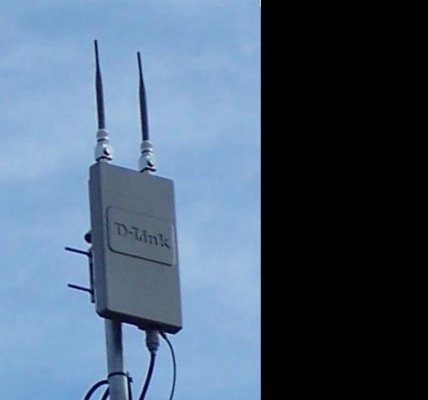Maybe kicking a dead horse here but the thoery of multi-pathing and diversity is that by having the offset one can recieve signal from various directions . One behind the other in this particular application defeats that purpose. In fact, I have used NetStumbler to measure and record the signal around the antenna for the 270 degrees (the balance is in the river) and it is clearly much stronger in the direction where one can see the two. I haven't totally relied on this data because I didn't bring my wardriving gear on this trip so have had to rely on a Orinoco silver card and manual pointing.

